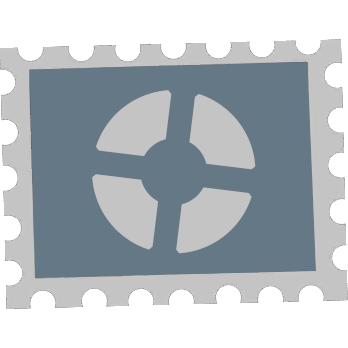- Jan 29, 2022
- 4
- 0
I'm trying to recreate an effect seen in Deltarune in a TF2 map - to be more specific, the scene where Kris and Susie first encounter the closet (see here: https://imgur.com/a/EZ6gOND )
The door opens with a sound effect, then music begins to play and the colours gradually shift from yellow/red to purple/blue.
So far I managed to get the sound effect, the door opening and the music working
(see here https://imgur.com/a/12J6ktW ) but I'm unsure on how to tackle the texturework.
For specifics, I'm using a logic_auto entity with an OnMultiNewRound Output to achieve what I want to do. I haven't created the shifted textures yet, as I'm unsure if I would need one vtf with both textures, two seperate vtf's with something that allows a gradual shift between them, or something else.
I found an entity called env_texturetoggle ( https://developer.valvesoftware.com/wiki/Env_texturetoggle ), which says that it only works on brushes with "the ToggleTexture proxy defined and pointing to an animated VTF file with at least two frames.", which I understand what it means, but I don't understand how I would implement it for this situation.
There's a list of related material proxies here ( https://developer.valvesoftware.com/wiki/List_Of_Material_Proxies#Texture_manipulation ) which might be helpful!
Thank you!
The door opens with a sound effect, then music begins to play and the colours gradually shift from yellow/red to purple/blue.
So far I managed to get the sound effect, the door opening and the music working
(see here https://imgur.com/a/12J6ktW ) but I'm unsure on how to tackle the texturework.
For specifics, I'm using a logic_auto entity with an OnMultiNewRound Output to achieve what I want to do. I haven't created the shifted textures yet, as I'm unsure if I would need one vtf with both textures, two seperate vtf's with something that allows a gradual shift between them, or something else.
I found an entity called env_texturetoggle ( https://developer.valvesoftware.com/wiki/Env_texturetoggle ), which says that it only works on brushes with "the ToggleTexture proxy defined and pointing to an animated VTF file with at least two frames.", which I understand what it means, but I don't understand how I would implement it for this situation.
There's a list of related material proxies here ( https://developer.valvesoftware.com/wiki/List_Of_Material_Proxies#Texture_manipulation ) which might be helpful!
Thank you!
Last edited:



